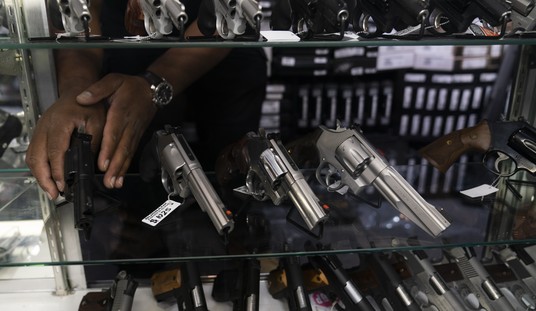A debate has erupted in Syracuse, New York over a controversial campaign aimed at stemming violent crime by stopping hundreds of residents in high-crime neighborhoods in order to search their vehicles. As the Post-Standard newspaper reported, the Syracuse police ended up seizing 43 firearms during these stops over a nine-month period, but during that same time they ended up issuing almost 1,000 citations for low-level marijuana possession, even though the local D.A. had stopped prosecuting such cases back in 2019.
The paper’s editorial board has slammed the tactic, comparing it to the “stop-and-frisk” strategy adopted by gun control advocate Michael Bloomberg when he was mayor of New York City that resulted in hundreds of thousands of police stops in order to look for illegally-possessed firearms.
Pretext stops damage trust between police and the people they are supposed to protect.
They invite racial profiling. Libonati found that nearly 90 percent of the marijuana tickets were written to Black people in a city that is 30 percent Black. Nearly 80 percent of those ticketed were Black men. Little wonder that aggressive over-policing of Syracuse’s minority community was an issue in last summer’s racial justice protests after the killing of George Floyd by a Minneapolis police officer.
… At bottom, there is this: Americans have a constitutional right “to be secure in their persons, houses, papers, and effects, against unreasonable searches and seizures …” The Supreme Court has upheld pretext stops as constitutional, and so police constantly push the boundaries — as they did here.
Onondaga County District Attorney William Fitzpatrick has fired back with an op-ed of his own, arguing that these pretext stops aren’t just legal, but are a useful tactic to address “gun violence.”
In 2020 Syracuse saw a remarkable increase in gun violence. Shootings involving injury and shooting victims were up over 72% from 2019. Individuals killed by gun violence was up 117% from 2019. While those are statistics in reality they are also lost lives, devastated families, traumatized children and people who have little quality of life because they are afraid to leave their homes.
In light of those appalling numbers, absolutely shocking numbers, the Editorial Board chose to devote Sunday’s editorial to criticizing the gun confiscation policies of the Syracuse Police Department. Interestingly, even the editorial writer acknowledges that SPD’s efforts to seize illegal firearms that are slaughtering our children by using pretextual marijuana stops is constitutional. While the author may offer his or her opinion that the practice is a “scheme,” is “questionable,” “pushes the boundaries” or whatever other pejorative phrase the dictionary may offer, the bottom line is the practice is legal. Being constitutional under the law is not like horseshoes, it either is or it’s not.
With all due respect to Fitzpatrick, the paper didn’t question whether these stops were legal, but rather, were they worth it? Fitzpatrick says yes.
As to the safety issue, I think any fair mind person would agree that taking 43 illegal handguns off the streets in Syracuse in the time frame covered in the original article is a good thing. Those are 43 weapons that will not be used in killing a baby during a drive by, in facilitating a carjacking or in disrupting a community gathering with a homicide.
Does Fitzpatrick have any evidence that those possessing the 43 seized firearms were planning drive-by shootings, carjackings, or homicides? Is he willing to consider that those caught in possession of a firearm without the required New York carry permit were carrying because violent crime has been soaring Syracuse, and they wanted to be able to protect themselves?
Our community is in crisis. Parents are afraid to have their kids walk the streets. And while the editorial writer makes the point that African Americans are disproportionally stopped by SPD’s enforcement efforts, he or she fails to distinguish between causation and correlation. While it’s true that more sunglasses and ice cream cones are sold in July, it doesn’t mean that ice cream causes light sensitivity. More Black men are legally stopped because more Black men are doing the shootings and are also much more likely to be shooting victims. The funerals are not being held in Manlius and Skaneateles, they are being held in the poorest neighborhoods in Syracuse.
It’s true that Black men are disproportionately both perpetrators and victims of shootings in the city, but those responsible for the violence still make up only a small fraction of the Black community overall. Rather than focusing efforts on the most violent offenders, it seems to me that the Syracuse PD focused on Black residents with the hope and expectation that their traffic stops would eventually ensnare some of those bad actors.
Fitzpatrick also argues that the paper should spend some time editorializing about the “deleterious effects of Raise the Age, Bail Reform, and Discovery Reform and the proposed Clean Slate and Elder Parole laws,” arguing that New York’s “progressive state Legislature continues on its suicidal mission to destroy what just two years ago was the safest large state in America.”
I agree that many of the state’s criminal justice reform efforts have made the public less safe, and I too would love to see the local paper explore the negative consequences of those new policies, but that doesn’t mean that pretext traffic stops are any less controversial or any more worthwhile. The D.A. says that the Syracuse police have put policies in place to effectively stop violent crime; “respond to the hot spots of violence, have meaningful community outreach, use constitutional tactics to proactively seize illegal guns and hold police officers accountable when they overstep.” I’d argue that the use of pretext stops disrupts the “meaningful community outreach” that Fitzpatrick mentions, and that there are much more effective, constitutional, and less controversial ways to address violent crime than the strategy he’s defending.









